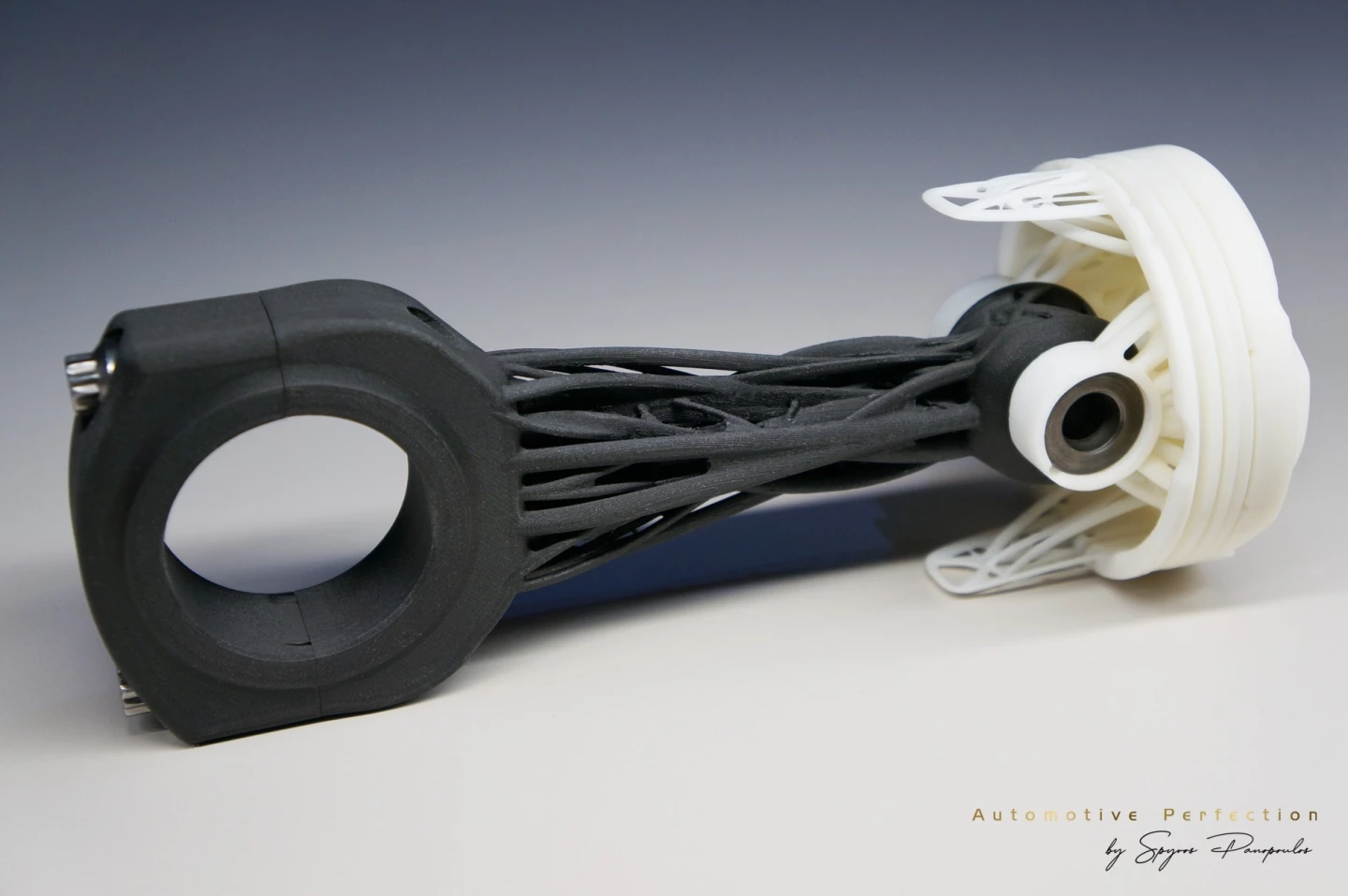Pictures come from a New Atlas article: https://newatlas.com/automotive/spyros- ... 4-92349157
A Greek 3000 HP (not a typo) "hypercar". Has a billet 4 litre V10 engine.
3D printed components carbon fibre for the con-rod & brake caliper. Ceramic for the piston.
From the article:
So it is like evolution where natural selection selects the better variants and drops the lesser variants.Generative design, as we've explored before, is a process in which a component's fixed points, stress loadings, materials and desired performance characteristics are placed into a CAD model, and then sent to a cloud processing service where they are randomly mutated over thousands, or even millions of generations in a process designed to emulate natural selection.
The better-performing designs are allowed to multiply and evolve while the worse ones die off, and eventually, complex but effective shapes emerge that could never have been designed by hand. They typically offer extreme strength, incredible lightweighting, and minimal use of materials in a manufacturing process that can only be achieved with 3D printing due to their strange, organic-looking forms.
Steel pistons are used in F1. Does a ceramic piston not have the advantage of not absorbing heat to the same extent so running cooler. But, if it does get hot it would then be more difficult to cool. Not the strength issue but premature ignition - or is that not the issue with hot pistons?
The organic vegetative forms of the con rod & brake caliper surprise and intrigue me as a mechanical engineer. Not the forms I would have intutively chosen but seeing them I am impressed by their structural virtue.


